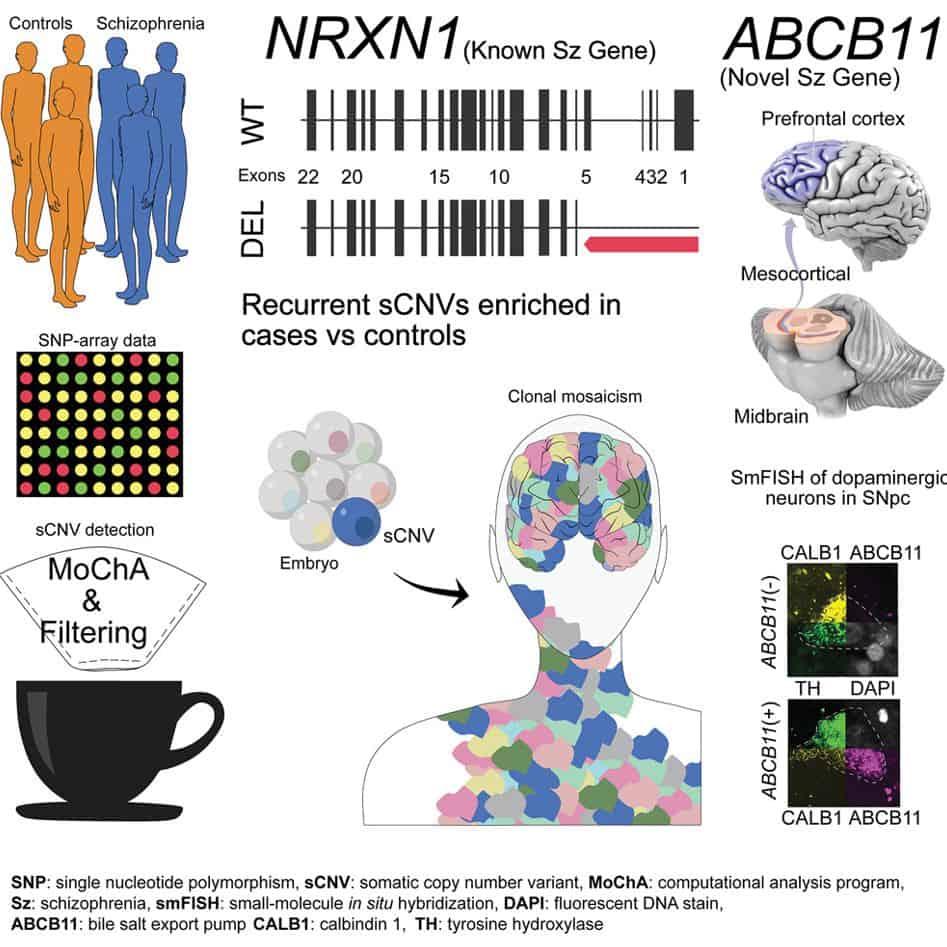This May Be Responsible for the Onset of Schizophrenia in Adults – Not Environment or Genes ‘Inherited From The Parents’
Schizophrenia, a psychiatric disorder that typically emerges in adulthood, is believed to result from a combination of environmental factors and genetics, although its exact cause remains incompletely understood.
A recent study published today in the journal Cell Genomics has shed light on a potential correlation between schizophrenia and somatic copy-number variants (CNVs), which are genetic mutations occurring early in development but after the inheritance of genetic material.
This study represents one of the initial comprehensive investigations into the connection between somatic mutations, rather than inherited ones, and the risk of developing schizophrenia.
Senior author Chris Walsh, an investigator at the Howard Hughes Medical Institute and chief of genetics and genomics at Boston Children’s Hospital, remarks, “We originally thought of genetics as the study of inheritance. But now we know that genetic mechanisms go way beyond that. We’re looking at mutations that are not inherited from the parents.”
To explore this relationship, the researchers analyzed genotype-marker data obtained from more than 20,000 blood samples, including samples from individuals both with and without schizophrenia, sourced from the Psychiatric Genomics Consortium.
Ultimately, they identified two genes, NRXN1 and ABCB11, which displayed correlations with schizophrenia when disrupted during prenatal development. NRXN1, a gene responsible for transmitting signals throughout the brain, had previously been associated with schizophrenia. Nevertheless, this study marks the first instance where somatic (non-inherited) NRXN1 mutations have been linked to the disorder.

Unlike inherited mutations, which are present in all cells of the body, somatic mutations occur in only a fraction of cells based on the timing and location of the mutation. If a mutation arises early in development, it is expected to manifest as a mosaic pattern throughout the body. Following this principle, researchers can identify somatic mutations occurring early in development that are present not only in the brain but also in a fraction of blood cells.
Walsh explains, “If a mutation occurs after fertilization when there are only two cells, the mutation will be present in half of the cells of the body. If it occurs in one of the first four cells, it will be present in about a quarter of the cells of the body, and so on.”
The second gene identified by the researchers, ABCB11, is primarily associated with encoding a liver protein.
Eduardo Maury, a student in the Harvard-MIT MD-PhD program, remarks, “That one came out of nowhere for us. There have been some studies associating mutations in this gene with treatment-resistant schizophrenia, but it hasn’t been strongly implicated in schizophrenia per se.”
Upon further investigation, the team discovered that ABCB11 is also expressed in specific subsets of neurons responsible for transmitting dopamine from the brainstem to the cerebral cortex. Since most medications for schizophrenia target these cells to reduce dopamine levels, this finding may explain the association between the gene and treatment resistance.
The team’s future endeavors involve identifying other acquired mutations that may be linked to schizophrenia. Given that the study primarily examined blood samples, it is crucial to investigate more brain-specific mutations that might have been too subtle or recent in a patient’s life to be detected in this analysis. Additionally, somatic deletions or duplications could potentially be overlooked risk factors associated with other disorders.
Maury concludes, “With this study, we show that it is possible to find somatic variants in a psychiatric disorder that develops in adulthood. This opens up questions about what other disorders might be regulated by these kinds of mutations.”
Image Credit: Shutterstock
